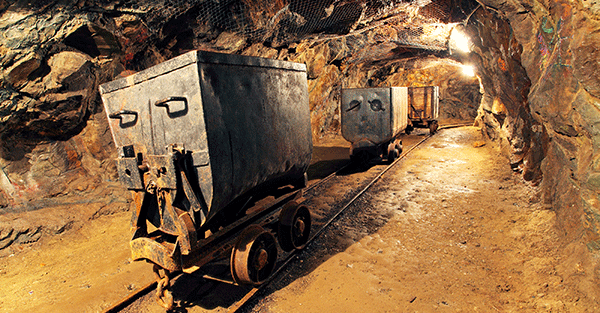
On a routine day in the winter of 1993, workers at the Chehrabad salt mine in the Zanjan Province of Iran discovered a remarkably preserved corpse dating back to 300 AD.
He apparently died in a salt mining accident in the early 300s. But the salt had kept the man’s body largely intact. Even his leather boots were still in great condition.
Perhaps most interesting was that the man was wearing a golden earring, and he had a number of silver coins in his pockets… suggesting that he may have been the mine’s paymaster, or perhaps even its owner.
Salt mining was an incredibly lucrative business back in the ancient world, and the owner would have probably been making a small fortune.
That’s no longer the case today, of course; salt is a cheap commodity that has little value in our modern society. But, intriguingly, the gold and silver found on the ancient man’s body are still worth as much today— if not more— than they were back in the 300s.
Lately I’ve been writing about very rational (and likely) scenarios where the price of gold and silver could skyrocket over the coming years.
I don’t say this because I’m a “gold bug”. I’m not fanatical about a chunk of metal. I’m not fanatical about anything except for my children; my conclusions about gold and silver have been objectively reached after careful research.
And I also acknowledge that I don’t have a crystal ball. In fact I am the first to admit that there is still a very narrow path for the United States, and the West in general, to escape from the financial black holes that they have created.
I’m not being sensational, either. The Congressional Budget Office itself projects that interest expense on the national debt, plus mandatory entitlement spending (like Social Security) will exceed all federal tax revenue by 2031.
Then, two years later, Social Security’s primary trust fund will run out of money in 2033… resulting in major cuts to monthly benefits.
The Federal Reserve will be left with very few options.
Either (1), they allow the government to fail. They allow Social Security to fail. They allow confidence in America to collapse. And they lose complete and total control of the market.
Or (2) they step in— most likely well before 2031— and bail out the federal government.
This means slashing interest rates back to record lows (or possibly even negative levels), and printing money as if their lives depend on it. In other words, they’ll resort to the same playbook that they used in 2009, and in 2020.
I’m betting on #2. Few bureaucrats have the stones to stand idly by while the federal government fails.
But the consequences of #2, i.e. low rates and more money printing— will predictably be more inflation… And most likely a formal, international rejection of the US dollar as the world’s dominant reserve currency.
The last point is critical to understand… because it’s very likely that a new global financial system would involve GOLD as the dominant reserve asset.
And that trend alone could send gold prices soaring more than 5x, to $10,000 or more. (And silver prices would likely rise as well.)
But I wanted to point out today that, should this likely scenario arise, the value of certain gold and silver companies would skyrocket far beyond 5x.
An international gold standard would mean that gold miners would become some of the most important companies in the world… and many large institutions would be rushing to invest in them, pushing their share prices higher.
A sudden surge in gold prices would also mean that mining company profits would go through the roof.
This combination could mean that share prices of gold mining companies rise at an even higher rate than gold itself.
Obviously there is greater risk to owning shares of a mining company, versus owning physical gold or silver.
Mining is a complicated business that often involves environmental protests, worker strikes, and serious operational challenges. Owning physical gold doesn’t carry any of those risks. So there definitely is a risk versus reward calculation to think about.
But one way to protect yourself against the downside is ensure you buy shares of mining companies at an excellent entry point.
Right now there are several large mining companies that are trading for incredibly lofty and unattractive valuations. One of the biggest gold miners, for example, is currently selling for over 400x earnings, and 40x Free Cash Flow. No thanks.
But if you look at smaller and medium sized miners, there is still a lot of value in the market.
For example, one company we wrote about for our premium investment research service The 4th Pillar, is a low cost, top quality producer with highly profitable operations. Yet it’s currently trading at less than TWO times operating cash flow.
(Two times cash flow means that the business is essentially making me a 50% operating yield, which is super attractive.)
A low entry price like this is critical; if gold miners do end up becoming critical (and popular) businesses to own in a few years’ time, then the company could see its share price increase by 10x or more.
But even if I’m wrong, I still own shares of a profitable business at an operating cash flow yield of 50%. That’s not such a bad scenario.
Remember, ANY investment is risky— and mining company carry unique risks. (This is also a reason to also consider mining royalty businesses, but we’ll save that for another time.)
But given that shares of many high quality mining businesses are deeply undervalued at the moment, it’s an idea worth considering.
Want more articles like this? Sign up here to receive Sovereign Man letters to your email.
